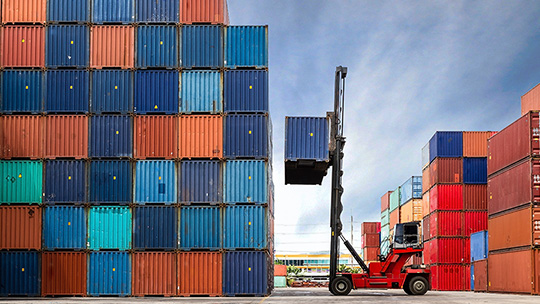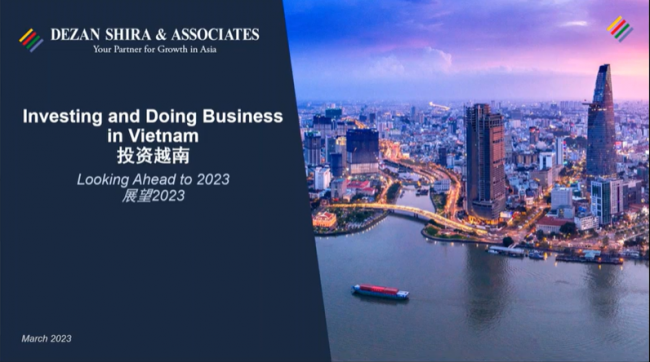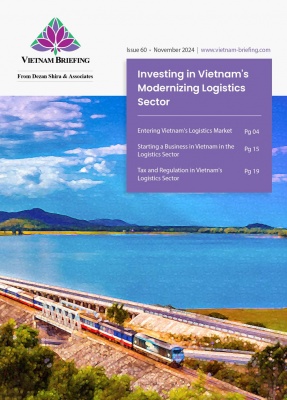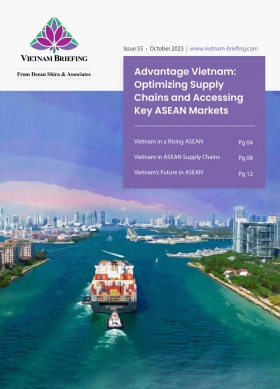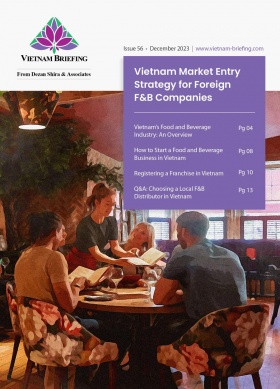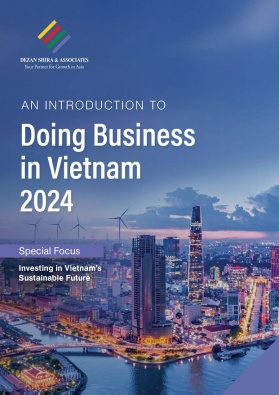Investing in the Logistics Sector in Vietnam: A Brief Guide
Vietnam’s logistics sector is becoming a major economic driver, supported by GDP growth, manufacturing expansion, e-commerce, government initiatives, favorable trade agreements, and strategic infrastructure, offering significant investment opportunities.
Vietnam’s logistics sector is emerging as a key contributor to its economy, driven by robust GDP growth, expanding manufacturing capabilities, and a surging e-commerce industry. With government support, favorable trade agreements, and strategic infrastructure developments, the logistics landscape in Vietnam presents significant investment opportunities for both domestic and foreign investors.
Economic context and growth prospects
Vietnam’s economy experienced a 6.42 percent growth in gross domestic product (GDP) year-on-year in H1 2024 and is positioned as a prime destination for logistics investments given the growth of its manufacturing investments and thrust on export trade.
Despite a temporary slowdown during the COVID-19 pandemic, the logistics sector has rebounded and accounted for 4.92 percent of Vietnam’s GDP in 2023, equivalent to over VND 502.56 trillion per data from Statista. Projections suggest that logistics growth will surpass the overall GDP growth rate by 2025, with particular emphasis on multi-modal transport networks and last-mile delivery solutions. As per a news report in VnEconomy, there are more than 34,000 logistics services enterprises in Vietnam.
The government’s commitment to fostering a logistics revolution is evident through the approval of Resolution No. 163/NQ-CP in 2023, which lays the foundation for a more integrated and digitalized logistics industry. The exponential growth of e-commerce, which is expected to reach US$52 billion by 2025, will further drive the need for advanced logistics solutions, especially in last-mile delivery and supply chain management.
Investment opportunities
Vietnam’s logistics sector offers diverse investment avenues across various segments, including third-party logistics (3PL), fourth-party logistics (4PL), maritime transportation, and cold chain logistics. 3PL refers to outsourcing logistics services such as transportation, warehousing, and inventory management to specialized providers. 4PL providers take on a more comprehensive role by managing the entire supply chain on behalf of businesses, coordinating between multiple logistics service providers, and optimizing end-to-end processes.
Key trade agreements such as the ASEAN Economic Community (AEC), the EU-Vietnam Free Trade Agreement (EVFTA), and the Vietnam-Korean Free Trade Agreement (VKFTA) have enhanced Vietnam’s attractiveness as a logistics hub in Southeast Asia.
According to a GII Research report, the freight and logistics market in Vietnam is projected to grow from US$48.38 billion in 2024 to US$65.34 billion by 2029, with a compound annual growth rate (CAGR) of 6.19 percent. Sea and inland waterway transport, bolstered by Vietnam’s extensive coastline, is also in fast-growth mode. The government’s aspiration to establish Vietnam as a leading maritime power by 2030 further reinforces the potential for investment in maritime logistics infrastructure.
E-commerce and last-mile delivery
The rapid expansion of e-commerce in Vietnam has transformed the logistics sector, making last-mile delivery a critical component of the supply chain.
Vietnam’s e-commerce market, estimated at US$14 billion in 2022, is expected to grow by 29 percent annually. This surge has heightened demand for efficient delivery services, including cash-on-delivery options, which remain the preferred payment method for Vietnamese consumers. In fact, led by the growth of e-commerce, the CEP (courier, express, and parcel services) segment is the fastest growing logistics function in the country.
With over 800 delivery companies operating in the country, competition in the logistics sector is fierce. Companies that can offer innovative solutions to reduce delivery times, enhance efficiency, and provide competitive pricing will have a significant advantage. Investing in technology and automation, particularly in last-mile delivery, is crucial for businesses looking to tap into Vietnam’s burgeoning e-commerce market.
Infrastructure challenges and government initiatives
Despite the promising growth trajectory, Vietnam’s logistics sector faces several challenges, particularly in terms of infrastructure. Inadequate road and port facilities, high logistics costs, and a shortage of skilled labor are key obstacles that need to be addressed. The government has prioritized infrastructure development and public-private partnerships to overcome these issues, with ongoing investments in road, rail, and port projects.
For instance, Vietnam’s cold chain logistics sector, which is crucial for the transportation of perishable goods like seafood and pharmaceuticals, has expanded significantly in recent years. However, the lack of adequate cold storage facilities and high rental costs continue to hinder the sector’s full potential. Investments in cold chain infrastructure, including advanced refrigeration technology and regulatory standards, are essential for meeting the growing demand for preserved goods.
Green logistics and sustainability trends
As global demand for sustainable practices intensifies, Vietnam is also focusing on green logistics to reduce the environmental impact of the supply chain. The Ministry of Transport has been instrumental in promoting multimodal transport, optimizing routes, and reducing costs through enhanced connectivity between different transport modes.
Moreover, the government is reviewing tax policies and fees to incentivize companies that adopt environmentally friendly logistics practices. While green logistics may require substantial initial investments in infrastructure and technology, the long-term benefits include improved operational efficiency, reduced costs, and alignment with global sustainability trends.
Vietnam’s National Strategy on Green Growth for 2021-30, with a vision to 2050, aims to green economic sectors through economic restructuring, innovative growth models, and ensuring environmental sustainability and social equity. To support this, Decision No 882/QD-TTg was approved, establishing a National Action Plan that identifies logistics services as one of 18 key focus areas.
Navigating regulatory frameworks
Foreign investors seeking to enter Vietnam’s logistics sector must navigate a complex regulatory environment. The Commercial Law 36/2005/QH11 and Decree No. 163/2017/ND-CP (Decree 163) categorize logistics services and outline specific requirements for foreign investment. Logistics providers must meet legal conditions regarding technical standards, safety criteria, and operational efficiency.
Decree 163 was issued by the Government of Vietnam at the end of 2017, replacing Decree No. 140/2007/ND-CP (Decree 140). Decree 163, effective from February 20, 2018, introduced key changes in logistics service regulations:
- Classification of logistics services
Under Decree 140, logistics services were grouped into three categories: (i) principal services (for example, goods pickup, warehousing), (ii) transportation-related services (for example, seaway, rail carriage), and (iii) other services (for example, distribution, postal). Decree 163 eliminated these groupings, simplifying logistics services under a broader definition. - B. Conditions for conducting logistics services
Decree 140 imposed vague technical requirements, allowing discretion by authorities. Decree 163 removed these generic provisions, preferring instead to specific industry regulations for technical standards (for example, aviation law for air transport). It also aligned market access conditions, like foreign ownership limits and personnel requirements, with Vietnam’s WTO commitments. However, logistics providers using the internet or open networks must comply with e-commerce laws in addition to sector-specific regulations.
Setting up in Vietnam
Foreign companies can establish 100 percent foreign-owned enterprises or enter into joint ventures with local partners. Both options require approval from the relevant authorities, and companies must adhere to registration and licensing procedures. However, investors in the logistics sector need to closely scrutinize entry requirements.
- Foreign firms are allowed to invest in marine transportation services in Vietnam and operate ships flying the Vietnamese flag, subject to several restrictions. They cannot own more than 49 percent of the company, at least two-thirds of the sailors must be Vietnamese, and either the captain or the first mate must be a Vietnamese citizen.
- In container handling services, foreign ownership is limited to 50 percent of a firm.
- For rail freight and inland waterway transportation, foreign firms can invest, but their ownership is capped at 49 percent.
- In road transport services, foreign firms may invest with the condition that their capital contribution does not exceed 51 percent of the company’s chartered capital, and they are prohibited from employing foreign drivers.
- For air transport services, restrictions are outlined in Decree 89/2019/ND-CP. Foreign ownership is capped at 34 percent, and the largest shareholder must be a Vietnamese national or legal entity. If a Vietnamese legal entity is the majority shareholder, its foreign investors cannot own more than 49 percent, and no more than one-third of executive-level positions can be held by foreign workers. The executive apparatus to calculate the ratio as required by this clause includes:
- General Director (Director), Deputy General Directors (Deputy Directors);
- Chief Accountant; and
- Personnels in charge of safety management system, aircraft operations, aircraft maintenance, flight crew training, and personnels holding equivalent positions determined according to the enterprise’s organizational structure.
For information on setting up in Vietnam, see our Doing Business in Vietnam Portal here, or speak to our experts on the ground by emailing us at Vietnam@dezshira.com.
Conclusion
Vietnam’s logistics sector is on the cusp of significant transformation, driven by economic growth, e-commerce expansion, and government initiatives. However, to capitalize on these opportunities, investors must be prepared to tackle infrastructure challenges, regulatory complexities, and competitive pressures. Those who invest in technology, sustainability, and strategic partnerships will be well-positioned to succeed in Vietnam’s dynamic and evolving logistics landscape.
About Us
Vietnam Briefing is published by Asia Briefing, a subsidiary of Dezan Shira & Associates. We produce material for foreign investors throughout Asia, including ASEAN, China, and India. For editorial matters, contact us here and for a complimentary subscription to our products, please click here. For assistance with investments into Vietnam, please contact us at vietnam@dezshira.com or visit us at www.dezshira.com.
Dezan Shira & Associates assists foreign investors throughout Asia from offices across the world, including in Hanoi, Ho Chi Minh City, and Da Nang. We also maintain offices or have alliance partners assisting foreign investors in China, Hong Kong SAR, Dubai (UAE), Indonesia, Singapore, Philippines, Malaysia, Thailand, Bangladesh, Italy, Germany, the United States, and Australia.
- Previous Article Understanding Vietnam’s Regulation on Recognizing Foreign Electronic Signatures
- Next Article Completing an Effective Stocktake in Vietnam
